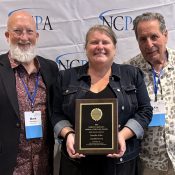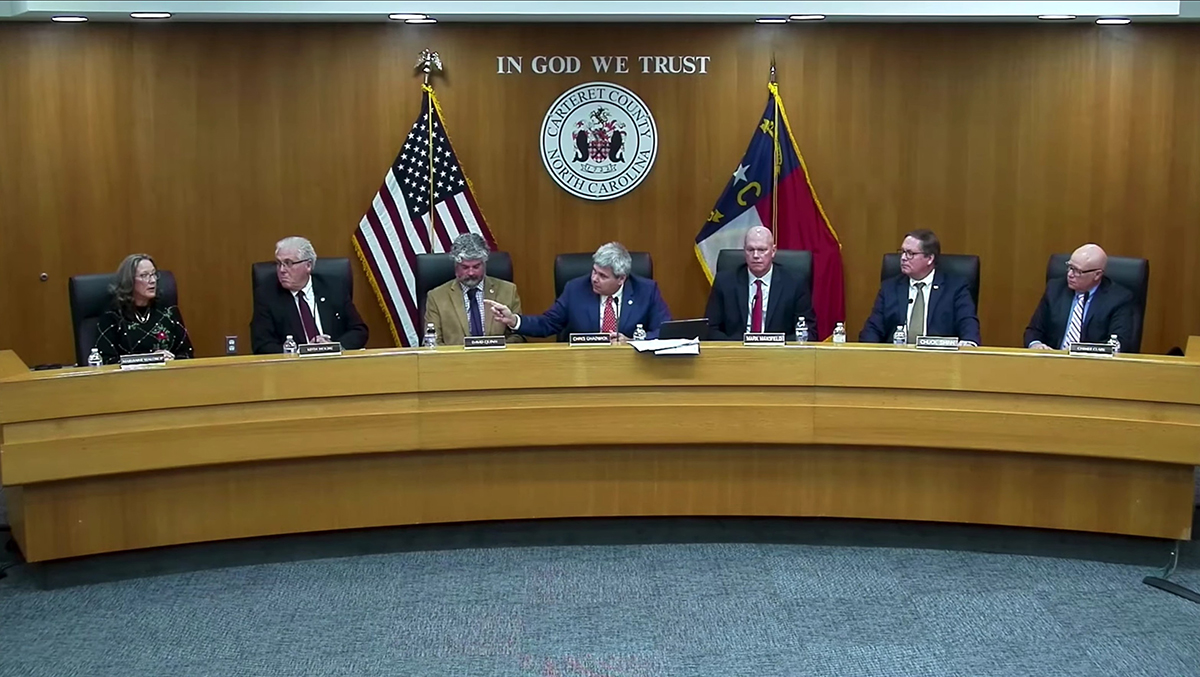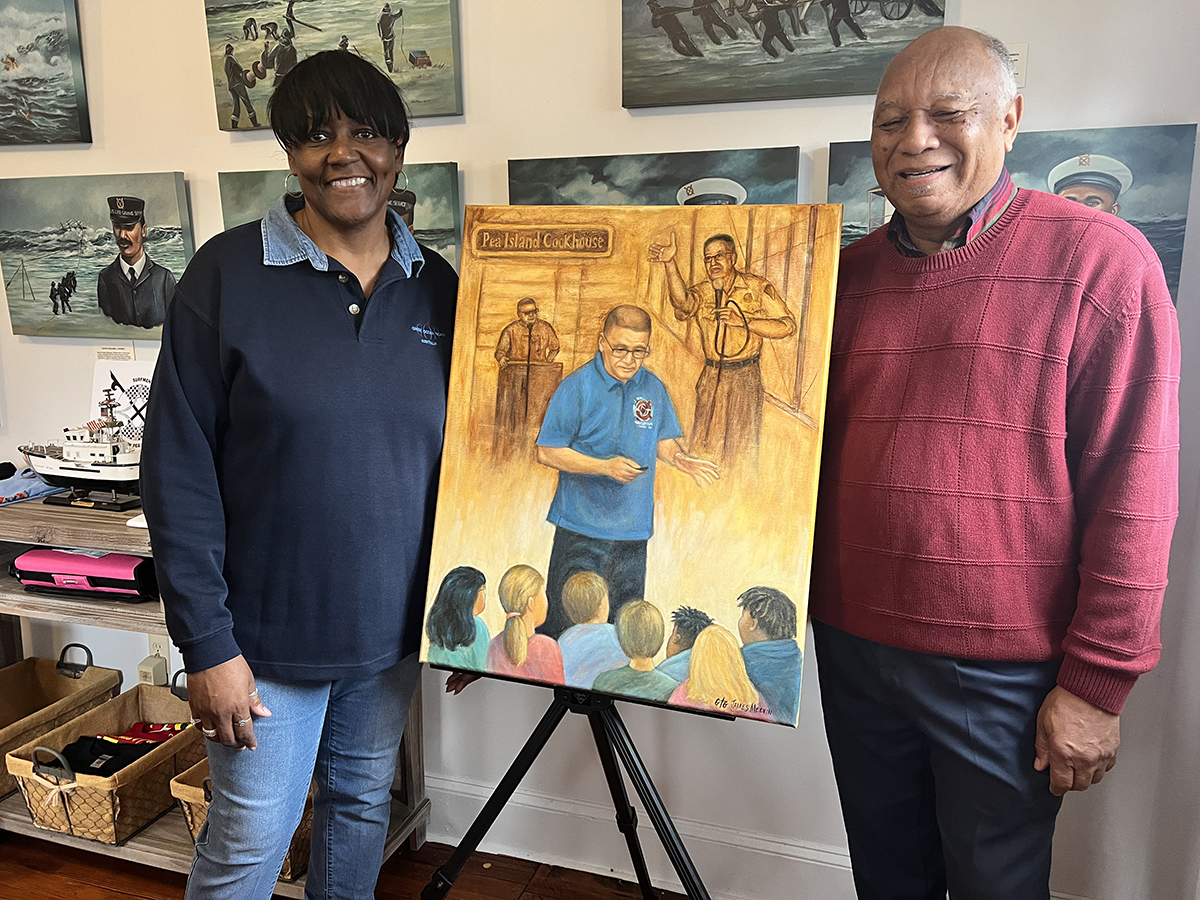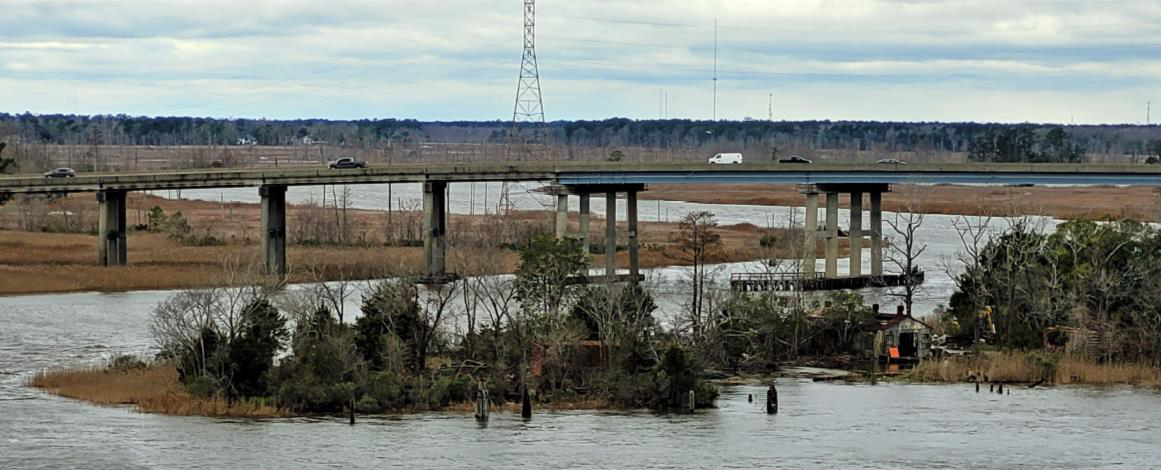
Dewey Hemilright has spent more than 30 years on the water as a commercial fisherman. Along the way he has become an outspoken, sometimes harsh critic of how commercial fishing is regulated in the United States.
He is forceful in expressing his opinions, his language sometimes colorful, but the knowledge is deep, insightful and earned through a lifetime in the commercial fishing industry.
Supporter Spotlight
“I started in the fish house, unloading the boat. That’s the lowest tier on the totem pole,” he recalled.
He moved up the totem pole to working in a fish house, “packing, laboring long hours, nights, winter, cold, all that other stuff.” And when he turned 21, he headed to Ocean City, Maryland, to go fishing.
“My first two weeks, I lost 15 pounds from being seasick and throwing up. But the first trip we went fishing, we caught a big bluefin tuna, and I thought it was the most unreal thing. And from then on, I’ve been going my own route,” he said, adding, “but I never thought when I got started into it, that (the industry) would end up where it is today.”
He’s a longliner, fishing from his 42-foot-long boat, the F/V Tarbaby. The name, he explained, came about because it’s a smaller version of the 48-foot Tarheel, a charter vessel owned by John Bayliss and built by Ricky Scarborough.
He doesn’t get out to sea much at all any more. The combination of his advocacy, bad knees and years spent on the water have taken their toll, although the Tarbaby still heads out from Wanchese with a father-and-son crew he’s worked with for years.
Supporter Spotlight
Hemilright resides in Kitty Hawk with his wife Sara Hallas, education and outreach director for the North Carolina Coastal Federation, which publishes Coastal Review.
Dwindling numbers
Longlining has become the least environmentally harmful method of commercial fishing, although “25 years ago, it wasn’t, but for the U.S. now, we’re the Mother Teresa,” Hemilright said describing the improvements regulators demanded and the changes the fishing industry made — or at least the changes have been made in the U.S. fishing fleet, which is one of Hemilright’s biggest complaints.
As to what remains of the domestic longline fishing fleet — Hemilright estimates the numbers from Maine to Texas total fewer than 50 active vessels — is forced to harvest fish in an environmentally safe way, but other nations aren’t, yet they have the same access to American markets as he does.
“You would want the U.S. standard of the harvest in these quota (for) these other (nations) in the Atlantic to be doing the same method. Or if they’re not, they don’t get our marketplace,” Hemilright told Coastal Review.
Hemilright’s concerns are wide-ranging. Asked about regulations and whether they are necessary, his one-word answer is “absolutely.” His answer, though, comes with a caveat: Stock assessments are based on models that use data selected by the scientists working on the assessment.
“That model performs by the data you interject into it,” he said.
A lot of studying
Hemilright was an indifferent student — at best — in high school, he said, telling Coastal Review, “If I would have studied this much in school, I wouldn’t be fishing today.”
The studying he does now has taken him to Majorca, Spain, for the International Commission for the Conservation of Atlantic Tunas (ICCAT) in an advisory role in 2019. From 2012 until 2023 he represented North Carolina on the Mid-Atlantic Fishery Management Council, and served as the liaison to the South Atlantic Fishery Management Council.
And it requires a lot of studying.
“You got to know the politics, you got to know the council, you got to know the stock assessment. You got to know this whole different picture,” Hemilright said describing what is needed to be an effective advocate.

Hemilright has stepped back. “Twenty-five years of bitching, complaining at fishery meetings, to where I’m coming down the backside of the hill and aging out,” he explained.
Yet, he is still passionate and highly critical of fisheries management describing the science behind the regulatory structure as trying “to put a roof on the house, and we don’t even got pilings for the foundation.”
“You would not run your life, your business, or anything, by the way that accounting is taking place,” he said. “The folks at the table would not want their livelihood, their household income, or anything based on this MSC.”
The MSC, or Marine Stewardship Council, is an international organization that rewards “efforts to protect oceans and safeguard seafood supplies for the future.” Its fisheries certification program is a widely used standard to establish whether a fishery is sustainable. The MSC awards its blue label only to fisheries that the organization determines meets its standards.
Hemilright said the organization is inconsistent in how it uses data to award blue label certifications, particularly sample sizes and margins of error.
“Some of them have a lower decision of standard of error. Some of them have a higher standard error,” he said.
The MSC has been criticized in recent years. The U.K. charity Shark Guardian published a 2023 study by the advocacy group On the Hook that concluded, “the MSC’s drive for growth and income has come at the expense of the Standard’s effectiveness and scientific credibility.”
Hemilright is particularly critical of recreational fishing. The criticism is not directed at the men, women and kids throwing a line in the water, rather it’s how what is caught gets counted – or doesn’t. He described recreational catch limits as pieces of a pie, “and you whack this pie up here, and you whack this pie up here — there ain’t so much of a pot of a resource out there.”
Commercial fishing is highly monitored with cameras on boats and inspectors taking trips with fishing craft to ensure compliance with catch limits. Recreational landings are self-reported and fisheries biologists use a small sample size to estimate how many fish are being caught.
Although recreational landings are estimates, they are often given a larger share of the pie than commercial fishing interests. Hemilright is critical of a recent North Carolina Marine Fisheries Commission decision to consider increasing the amount of southern flounder allocated to recreational fishing to 50% and reducing the commercial portion by 10% of what had been previously allocated. The reallocation plan came despite acknowledgement that the recreational catch was 14,000 pounds over the 2024 limit. Commercial landings were within 1.6% of allocation.
“You’re taking it from one that’s accountable for its catch, and you’re giving it to the other side that’s not that’s not accountable to the methodology that’s been placed upon them,” Hemilright said.
Recognitions
Hemilright has received numerous awards for his advocacy. In 2015, the Coastal Federation awarded him its Pelican Award for “outstanding contributions to education and outreach on behalf of the federation.”
The Mid-Atlantic Fishery Management Council presented him in 2024 with the Ricks E Savage Award “given annually to an individual who has made exceptional contributions to the management and conservation of fishery resources in the mid-Atlantic region.”
Looking back on his career, Hemilright laughed at how it unfolded.
“I did it for North Carolina, that’s where I’ve been advocating, and my community and my town. I never thought when I got started into it, that it would end up today, not just what I’m doing, but the industry, because the world evolved where the technology changed, things have changed,” he said.







